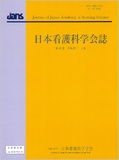Japanese
English
- 販売していません
- Abstract 文献概要
- 参考文献 Reference
要旨
目的:人工肛門造設高齢者の在宅ストーマケア確立に向けた皮膚・排泄ケア認定看護師(CN)の看護実践プロセスを明らかにし,人工肛門造設直後の主たる支援者であるジェネラリストナースへの示唆を得る.
方法:皮膚・排泄ケアCN12名に半構造化面接をし,修正版グラウンデッド・セオリー・アプローチで分析した.
結果:看護実践プロセスは,『実施者の見極め』と『人工肛門とともに生きることのイメージ化促進』のうえで『実施者合わせの装具選び』をし,困難時『さらに本領発揮』するものであり,『完璧を求めない』姿勢が推進力として作用していた.
結論:『完璧を求めない』姿勢の根底には,新たなセルフケアを求められる高齢者の「生きることの困難」に対する看護師の包括的な理解があると考えられた.ジェネラリストナースもこの姿勢を貫くことで,両者が同じ目標を見据えて高齢者の在宅ストーマケア確立を促進すると示唆された.
Objective: We aimed to establish best practices for certified wound, ostomy, and continence nurses (CNs) who design home stoma care programs for older patients with colostomies. We also recommend best practices for general nurses who primarily provide patient care immediately after colostomy surgery.
Methods: Semi-structured interviews were conducted with 12 CNs. Their responses were analyzed using a modified grounded theory approach (M-GTA).
Results: The nursing practice process includes "identifying the practitioner," "promoting the image of living with a colostomy," "selecting a brace to match the practitioner," and "further demonstration of one's true potential". Nursing practice was stimulated by a "never seek perfection" attitude.
Conclusion: The "never seek perfection" attitude was thought to be rooted in the nurses' comprehensive understanding of the "difficulties of living" of older patients who require new selfcare. It was suggested that generalist nurses should also adopt this attitude to promote the establishment of home stoma care for older patients, with CNs and generalist nurses working toward the same goal.
Copyright © 2023, Japan Academy of Nursing Science. All rights reserved.


